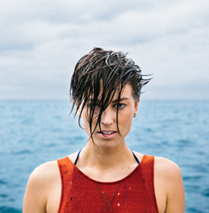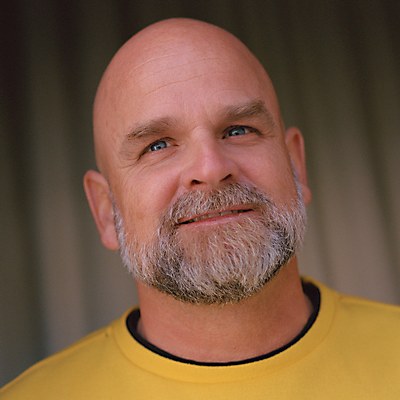How did you get started in design and advertising? I originally intended to go into journalism and began pursuing creative writing. Through an early internship at a magazine, I learned more about art and design and their roles in bringing a story to life. I started learning more about artist Barbara Kruger and the work of designer David Carson and Ray Gun magazine. I became struck by artist Jenny Holzer and how she uses words and ideas to create large impactful installations. I studied Saul Bass’s film title sequences and graphic design career. All this naturally led me on a path to advertising, where I spent many years as an art director—and eventually a creative director—shaping brands and their stories.
What led you to establish your creative agency The Working Assembly (TWA)? I had some unique creative opportunities during stints at various agencies where I got to work with innovation teams and help launch new brands from the visual identity stage through to the initial campaign. It was exciting to see that full funnel of ideation and strategy and putting new products or services into the world. I loved advertising, but I often felt some of the challenges we had were analogous to selling someone’s house that wasn’t always built properly. I was most excited about coming in early and building a foundation for a client and then going from there.
Around this same time in 2016–17, there was an emergence of startups exploding in New York City, and they were often looking for brand and creative support that large scale shops—like the agencies I was working for—weren’t ideal for engaging, due to the scale and traditional ways of working at these big places. I started loosely consulting with a number of startups and helping “assemble” creative teams all while “working”—thus, the name The Working Assembly.
We began to gain traction through referrals and more work than we could keep up with on the side. My partner Lawrence O’Toole quit his job first to scale our studio. I was nervous, but when I became pregnant with my first child, I knew it wasn’t going to be possible for me to start a family, have a full-time job and have a side hustle. I needed to take a leap of faith and commit to building the agency. Since then, we’ve scaled our team to just under 40 full-time team members and have been lucky to work with new and emerging brands as well as established companies.
What’s it like working with clients at different stages of their businesses, and how (if at all) does your creative process change? One of our very first assignments was to rebrand MassMutual, a nearly 170-year-old company. The way in which we got the project was very untraditional: it included a lot of serendipitous factors, connections and support that led to this incredible opportunity that I still can’t fathom to date. However, it’s just a glimpse into what makes MassMutual such an incredible organization—that it would entrust this gigantic endeavor with our small women-owned team. All that to say is that oftentimes when you have a storied brand looking for fresh ideas, an untraditional partner can be exactly what you need to meet you at the moment you find yourself.
MassMutual had worked with a number of larger branding shops and was at the point where it was open to trying something new: working with a much smaller team in a very agile and lean way. Even now, our team at The Working Assembly comes in and acts as an extension of the client’s internal creative teams and collaborates in a way that is not typically seen in agency and client relationships. On the other side, small new brands yet to be established appreciate our proven experience and ability to scale with them as they grow. And we work the same way—nimble, collaborative and as an extension of the founders.
What are some of your favorite projects you’ve worked on at TWA, and what have you learned from them? The ones where we create an extend a visual identity and brands system into a physical space. I still love the work we did for the Museum of Ice Cream because the brief was so open and we had an amazingly imaginative client who was excited to push the work creatively. The museum wanted every element of the space to be “on brand,” from the signage to the wayfinding to the custom wallpaper to the fake bottles we created for the bar area. Our work for Cara Hotel, acupuncture clinic ORA, skincare studio Peachy and wellness center Sage + Sound are also other examples of our team’s work in brand experiences. I have a soft spot for consumer-packaged goods projects, too; it never gets old going into the grocery store and seeing our designs for Haven’s Kitchen, Partake, Sanzo and Sweet Nothings!
Tell us about the recent launch of TWA’s type foundry Work Type. What inspired this endeavor? One of our designers approached us last year about the idea of building and asked if we would be open to having it be an internal effort. We started TWA to be a vehicle for all types of creative expression, both client-driven and self-initiated. Type design feels especially like a natural extension of our design practice. We try to customize all our type for branding projects and have also worked closely with type foundries to commission custom typefaces on behalf of our clients. It’s personally been thrilling to see our team’s excitement about Work Type, and I’m eager for all that is still planned to come. I hope it’s just the start of all the ways our agency will build tentacles of creative platforms. This pas summer, we also bought an ice cream store in the Hudson Valley, and our team got involved in making that come to life.
One of your passions is supporting other minority-owned businesses and women of color entrepreneurs. In what ways do you give back in your station as founder and creative director of TWA? I feel incredibly fortunate to live a life where I’m able to be creative as a profession. It’s honestly a dream especially given my background and how I immigrated to this country and some early challenges I faced. I knew that when building out our practice, supporting founders—particularly women and founders of color who are the most marginalized and underfunded—was going to be a large part of the work we did. Branding can be a competitive edge, and we’re able to provide that to these founders in hopes they have a better opportunity to be taken seriously, raise venture capital and get market traction.
Where do your best ideas come from? I tend to say to be interesting, you have to be interested, so I spend a lot of time listening and asking questions. That generally will get ideas going. I also try to stay off social media and industry blogs: they can cloud your perspective and make you feel generally less than and mentally deflated. It’s much better to go offline and get inspired by traveling, experience new things, viewing art and meeting people. Do things to feed your creativity and spirit, and protect it at all costs. Surround yourself with people who look for the good. When people can see the beauty in ordinary life, they can make beautiful things.
My best ideas also come from my team! We have an incredible roster of designers, writers and thinkers who each have unique backgrounds, perspectives and talents. I love collaborating with them, and I still get excited every day to create together.
What skills do young designers need to be successful today? Because creativity is so personal, it can be difficult navigating feedback and projects with objectivity. I try to imbue a no-style style within our practice. It’s amazing when your personal aesthetic and interests can align serendipitously to a client’s, but more often, it’s about solving a strategic problem and finding the right solution. Commercial art is not just making what you love to make but what’s right for the brand and project. That isn’t to say I think you should do whatever the client wants you to or make something ugly but rather encourage you to not follow trends for trends’ sake or mimic what you already see out there that’s successful and regurgitate it in some way. It’s diving deep into a brand’s positioning, identifying that visual white space, and creating something that is timeless and resonates that will make you successful.
Do you have any advice for people just entering the profession? Don’t chase jobs because you think it might make your parents happy, a bullshit title that sounds good or money. The financial thing can be tough, I know: I was waitressing until I was 26 because I didn’t have parents subsidizing my income, and I wasn’t making enough money to live in the city and also pay student loans. I know how tempting it can be to take that job because the pay is a bit more. In the long run, you’ll be much more successful if you take a job where you are excited to learn from the person who will be your boss; you’re going to get up to bat for a lot more creative opportunities to build your book and resume, the place that is going to train you to present and give you chances to practice. I know a lot of people who took a job at a big tech company or a prestigious studio, but then in their first five years, they were relegated to a much more supportive background role while I was selling work, networking with clients, getting hands-on experience being on set and getting incredible mentorship. A job indeed is what you make of it, but we can’t discredit who is above you and will be invested in helping you get there. Try not to focus on titles and money; I promise all that will come if you have undeniable talent and experience. ca












